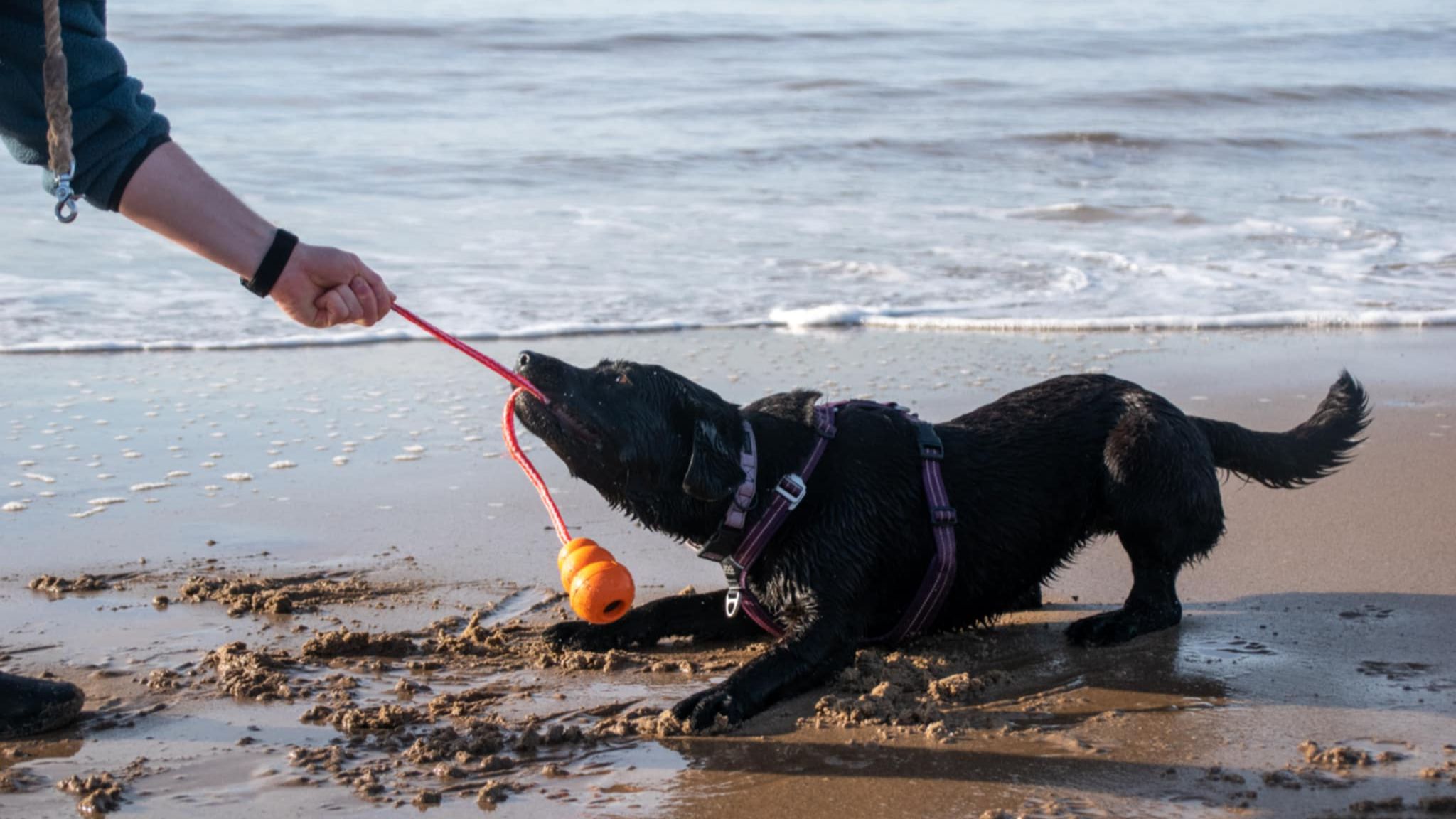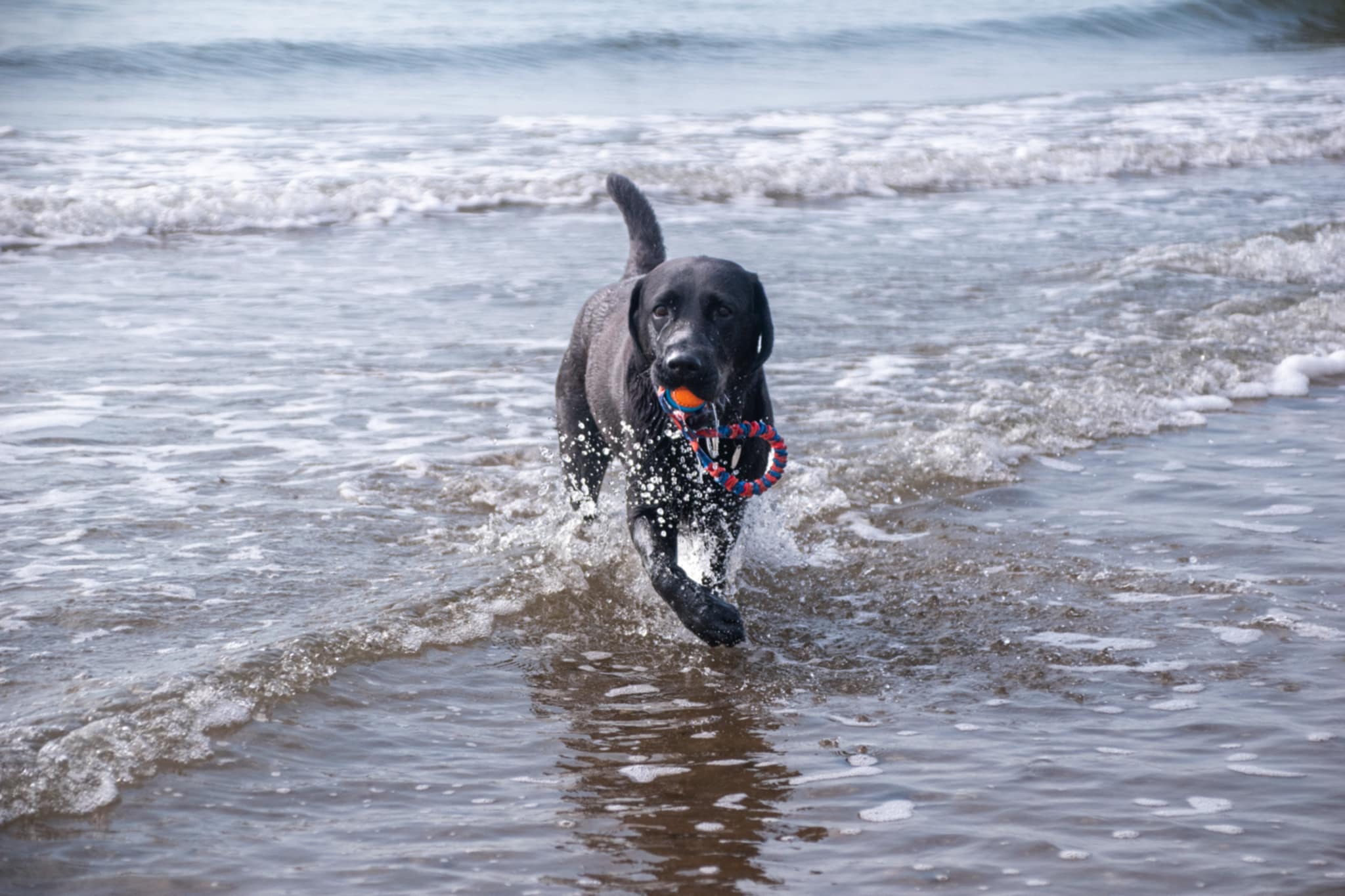
How to Bond with Your Dog Through Play
Mar 27, 2025Playing with our dogs is more than just a routine activity - it’s a powerful way to build a deeper bond and enhance their well-being. Our in-house trainer, Susi, explores different types of play, how they cater to a dog’s natural instincts and, most importantly, improve our bond.
Key Takeaways
- It's science – playing with your dog can provide a positive impact.
- Connection - whether you're using playtime during training, exercise, or just for fun - it strengthens the bond between you and your dog.
- Choose the right game - depending on your dog's breed, individual characteristics, and how you engage together: choose the game you both best enjoy.
Playing with your dog is so much more than just chucking a ball to tire them out. The experience of playtime with our dogs is something we can take for granted. It can feel like something we do out of obligation. But you might just be missing a trick - it's something that can massively help to build a positive relationship between you and your dog. There are different kinds of play you can practice to make this a fun game for you both. Tug, chase, fetch, or simply playing just with you - they all have different functions but will help your dog see you as a fun person to be - and engage - with.
The Sciencey Bit
Looking further into developing a relationship through play gives us the opportunity to gain deeper understanding of how our dogs play and why they choose to play with us. One of the main functions of play in dogs is to work on their motor skills (Sommerville, O'Connor, and Asher, 2017). We see this in games of chase, tug, and personal play with their humans or other dogs. Chasing other dogs or a toy works on speed and agility. Tug activates different muscles, a bit like strength training at the gym.
Some research has also been conducted into whether dogs want to play with people, even if their game has been interrupted. One study found that dogs generally wanted to restart a game with a human they'd played with before instead of engaging in that game with a stranger (Horschler et al., 2022). Those dogs not only wanted to keep playing, they wanted to keep playing with that person even if there was someone else in the room.
Another study also found that HOW engaged the human was made a positive impact on the dog (Horowitz & Hecht, 2016). This is something we've seen as trainers for years; the more fun you make yourself, the more likely your dog is to play with you! It is worth checking in frequently to make sure your dog is still enjoying the game. Take 3-5 seconds with a neutral stance (and if you have a toy, move it out of sight) and see if your dog is still looking up at you. If they have chosen to move away or sniff, let them. Remember, we don't decide what is enjoyable for your dog, they do.
What's In A Game?
First things first, what game does your dog want to play? Different games provide different motivations for our dogs... a lot of that comes down to breed and how they've played in the past. Play can give your dog an outlet for breed-specific behaviours, like getting a whippet to chase a toy or a spaniel to hunt for a lost ball. Think about the kind of dog you have and what they naturally like to do. Just remember, not every dog within a breed is the same. One of my labs loves nothing more than throwing herself into the water to fetch a ball while the other would rather have some (gentle) wrestling with his favourite people.
Your dog's play preference may also change throughout their life, so don't be afraid to practice each kind of play at regular development stages. Each kind of game can be motivating for different reasons. With all these games, you want to keep the dog's movement and well-being in mind. A quick, super fun game is going to be more beneficial rather than something sustained where your dog may over-exert themselves.
Tug is a great game as it's very interactive between you and your dog. It can be a quick way of rewarding your dog and encouraging them to come in close to you (great for recall!) if they want to. Using two toys can help if your dog doesn't like to drop them or just to make the game a bit more exciting.
With a tug, you don't want to nag the dog to play, Remember, this is meant to be fun, not a chore! So you can make the toy move away from your dog in quick bursts to help them see it as more exciting. Teach your dog to "drop" the toy separately so they aren't getting frustrated in the game, keeping things as positive as possible. To help avoid your dog grabbing your hand instead of the toy, offer the tug horizontally with a hand on either end or drag the toy along the ground. With a little target practice, they will be grabbing the middle rather than your fingers.
Fetch or chasing an object helps bring a bit more energy. It also works on your dog wanting to bring things back, so you can play the game again! Having a second ball or toy (like this pictured pocket powerball) to fetch can also help. They learn the second toy isn't thrown until the first one has been dropped. You can roll the ball instead for a less intensive game that your dog will still enjoy. While playing fetch, you can ask your dog to come in close with a "middle" or "touch" cue and part of the reward also allows them a little space if that's what they prefer.
You may also see that your dog likes to play with just you. This is beneficial on those occasions when you haven't got a toy, if your dog isn't interested in toys, or if you want to individualise your play style. This is something that will be different for each dog. This isn't necessarily wrestling with your dog - although some dogs do enjoy that part of a game. It can be encouraging your dog to chase you, playing hide and seek (which will also help your recall), or even doing some tricks like "spin" together.
With all these games, you want to think about how exciting this will be for your dog. We want them to be engaged without tipping over into it being too much. Don't forget to keep games short and snappy. Try to engage in meaningful play a few times a week and see how quickly your relationship with your dog improves. And lastly, don't forget to have fun!


